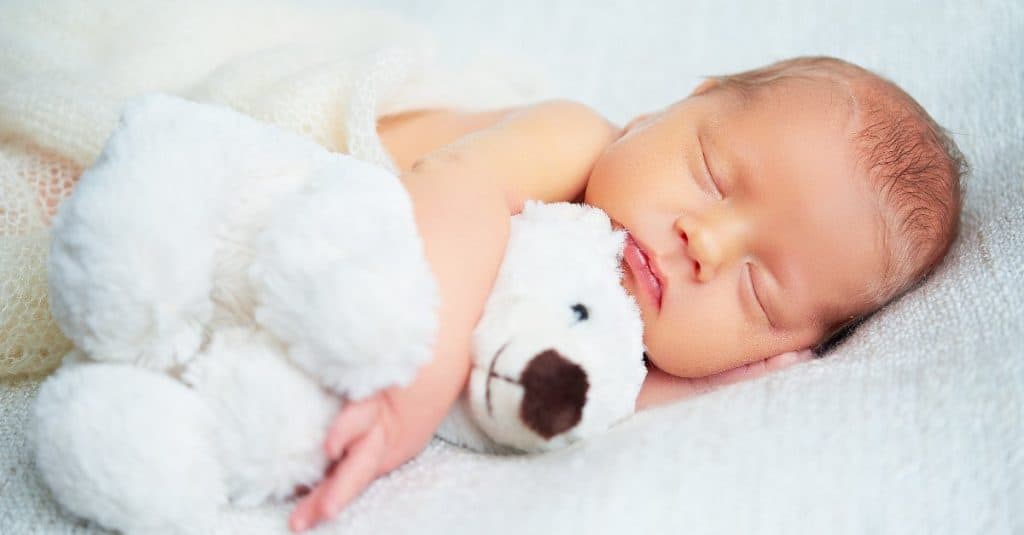Loveys, stuffed animals, and blankets provide many children with comfort and security. Apart from being great sleep aids, loveys help babies adapt to new situations that are known to cause stranger anxiety and separation anxiety, such as starting daycare or going to a doctor’s exam.
But when can your baby sleep with a lovey? Why can’t they start there from the get-go?
Babies can sleep with a lovey when they’re as young as 4 months old – but only if they’re still awake! They should be kept free of blankets, pillows, soft toys, and bumper pads until they’re at least 12 months old, so as to reduce SIDS risk.
A lovey isn’t always a blanket or a stuffed animal. Loveys can be pretty much anything that your baby comes to associate with comfort and security and helps them get to sleep. Babies have been known to take unusual objects such as rubber ducks and articles of a parent’s clothing as comfort objects.
How to Introduce a Lovey
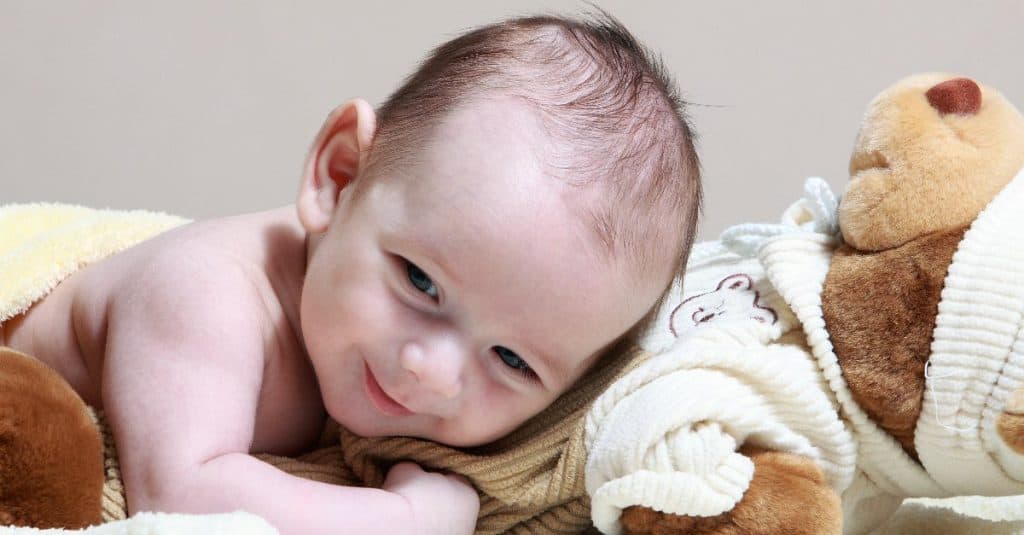
Holidays, baby showers, first birthdays, and christenings are occasions where your baby is likely to receive a couple of blankets and soft toys as gifts. Pick one that you think would make a good lovey, or lay out a few and have your baby pick one out.
Naming the lovey can help give it more “personality” and add to its value as a sleep aid and comfort object.
The goal is for your child to associate the lovey with you and with your comfort. Bring it with you when you go out, whether that be on your trips to the park or to novel and potentially stressful situations such as seeing a doctor.
But when can babies sleep with a lovey? Is there a difference between whether they’re playing them during the day or at night? Absolutely.
Babies can play with loveys as early as 4 months old when they’re up and awake, but babies can’t sleep with loveys until they’re at least a year old. Blankets and other soft toys are excellent sleep aids past that age, but until then these are just suffocation hazards. The possibility of this might be small, but the danger is very real and must be accounted for.
If your child does fall asleep with the lovey before then, make sure to remove it once they fall asleep, and make sure that other caregivers know to remove the lovey as well.
After the 12-month mark, you can begin involving the lovey in their bedtime routine. Cuddle up with it while they nurse, read bedtime stories, and sing lullabies. It can become a powerful tool when it comes to transitioning to a toddler bed or sleeping in an unfamiliar place such as a hotel.
Some children don’t become attached to loveys and won’t come to use one as a security object. Children all find different ways to self-soothe, and it is perfectly fine if your child does so without the help of a lovey.
When Can My Baby Sleep With a Lovey? Things to Consider
1. Age
Babies start to become more social and exploratory around 4 months of age. A lovey can be introduced as early as then and can act as an adaptive tool to help your baby cope with and feel secure in unfamiliar places and situations.
A baby’s age is the most common indicator of when they can begin sleeping with a lovey. The American Academy of Pediatrics (AAP) recommends that babies sleep on their backs, in a crib with a flat mattress and nothing else.
Babies should be at least 12 months and ideally 18 months of age before sleeping with a blanket or soft toy. However, pacifiers, night lights, and white noise machines make suitable comfort objects for babies less than a year old.
Swaddling can also act as a sleep aid for babies who are not yet rolling over, as it inhibits their Moro reflex or startle reflex and stimulates the feeling of being inside the womb. Most babies begin rolling over and breaking out of swaddles at around 4 months of age.
2. Doctor’s Recommendations
When can your baby sleep with a lovey? You might be tempted to go off common guidelines online, but the situation will be much safer if your pediatrician green-lights their lovey use.
Even if the question is about when can your baby sleep with a lovey, age isn’t the only factor at play here. You also need to figure out your baby’s motor development progress, and your pediatrician might ask you a couple of questions to cover that base.
- Can they roll over independently?
- Are they kicking blankets off or pulling them up?
3. Lovey’s Size
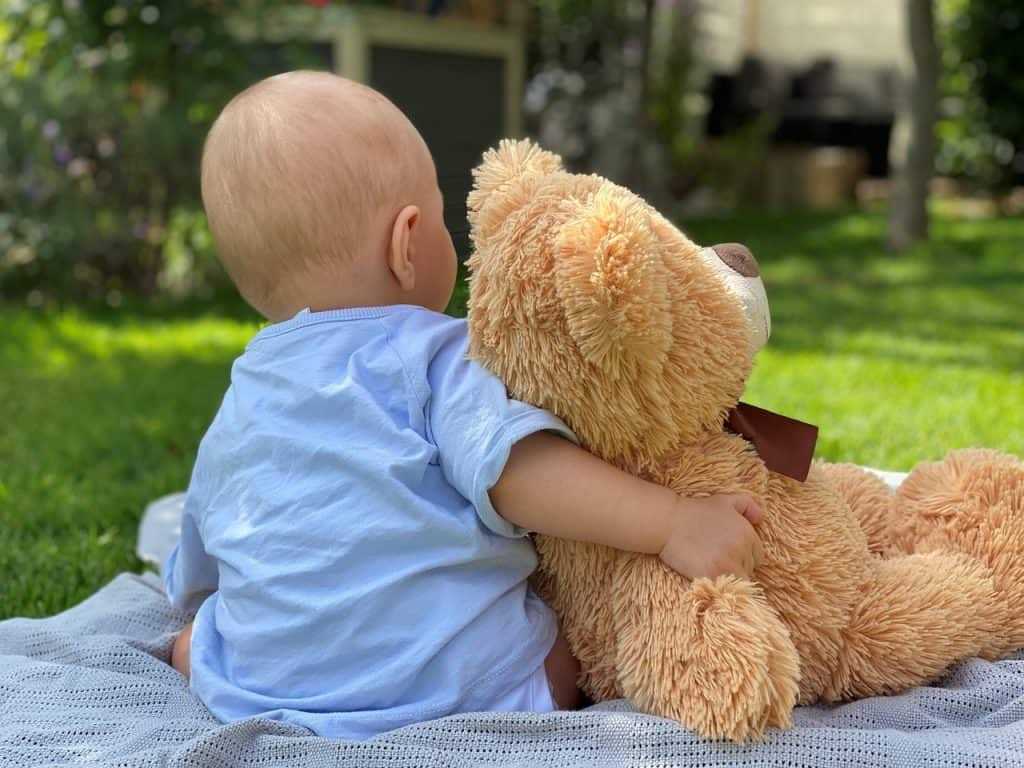
If a lovey does find its way over a baby’s face, it should be small enough and light enough that they can remove it on their own just by rolling over or moving their head over to one side.
Blanket loveys typically measure between 10in x 12in and 12in x 12in. Thinner, breathable fabrics such as muslin and cotton are also preferred over thick fabrics such as fur which a baby can pull out and ingest or choke on.
4. Construction and Parts
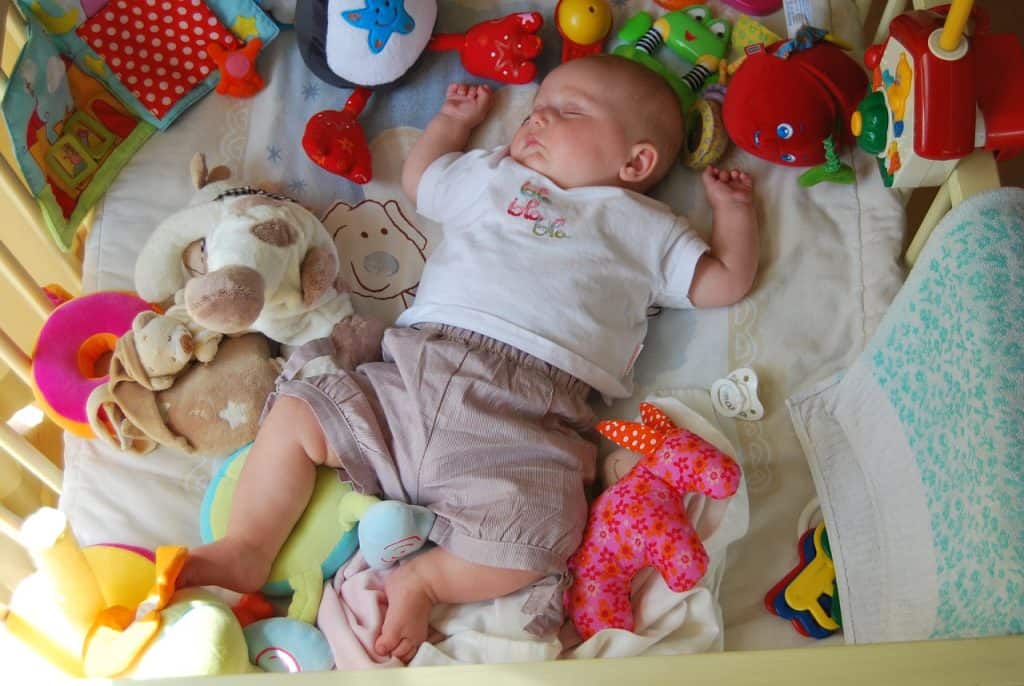
Some soft toys have plastic buttons, glass eyes, and other hard parts which can come off and pose a choking hazard. Loveys should not have any detachable parts, or any parts small parts that could potentially come off with wear and tear.
From time to time, check the lovey over for any loose threads. Loose threads may cause a condition known as Hair Tourniquet Syndrome, which although rare, can be painful and dangerous if the thread manages to wrap itself around a baby’s finger.
Avoid loveys that are less than 1.25 inches or 3 centimeters in diameter and 2.25 inches or 6 centimeters in length. Loveys should not have small ends that your baby can fit into their mouth or strings that measure more than 7 inches.
5. Features
Skip the loveys that are battery operated, light up, and make noise when choosing a lovey to sleep with. Reserve those for adult-supervised playtime during the day. Go for a soft, snuggly lovey with a softer color scheme that will not be too stimulating at bedtime.
A machine washable and dryer-safe lovey that you can wash alongside your baby’s other things will make cleaning easy and hassle-free.
Tips on Using a Lovey
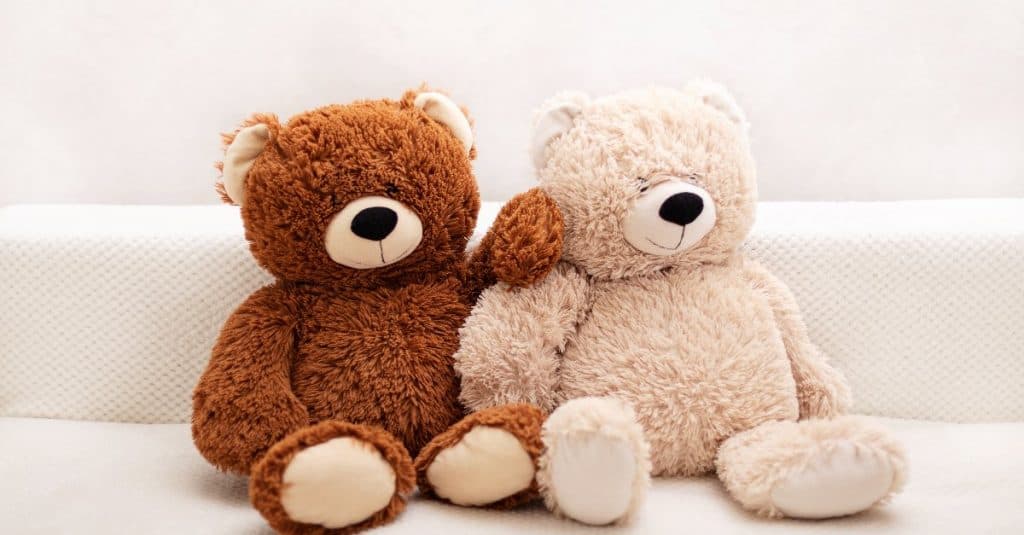
Make It Smell Like You
A baby’s sense of smell is one of their best. Early on, babies can recognize their parent’s scent and associate it with their touch and comfort. Your baby is more likely to become attached to a lovey that smells like you.
Take the lovey to bed with you for just a night before giving it to your baby to allow it to take on your scent. You can do the same with a crib top sheet wrapped around your pillow as well.
Get More Than One
Once your baby becomes attached to the lovey, chances are, they will want to bring it everywhere with them. The loss or misplacement of a lovey can be extremely distressing to a baby and by extension, to you as well.
Keep an identical copy of your baby’s lovey that you can easily bring out in case one gets lost. Pack it in your suitcase on vacations and overnight trips, just in case the original goes missing where you can’t easily get another one.
Having a copy of your baby’s lovey also means you’ll be able to easily switch them out to wash and keep clean.
Alternate Between Various Loveys
Some babies have more than one lovey that they use as self-soothing and comfort objects in different situations. One may be used for going to daycare, another for going to the doctor’s office, and another for bedtime.
The number of loveys a baby uses will dwindle and they will eventually stick with just one or two special loveys. As children grow older and they gain a better understanding of social norms, the number of places they bring the lovey to may decrease, and the lovey may eventually be reserved for bedtime use only.
